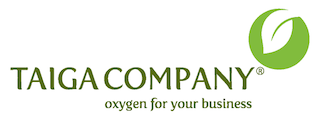Sowing the Seeds of Sustainable Brand Development
Sustainable brand development is an ongoing but core part of modern business. Owing to customer expectations and changing world regulations, your company can’t afford to ignore eco-consciousness. From finding the right audience to transparency, here are some ideas.
Partner with the Right Promo Service
Every brand needs some kind of promotion. How else would people know about your business? There are numerous ways you can do this these days beyond traditional print media like magazines, TV, and radio. The internet is a great example. However, people love merchandise and official products. Promotional products like sustainable business cards and reusable water bottles will help reduce waste. For paper, in the US alone, this is 85 million tonnes per year.
Target Eco-Conscious Consumers
Finding the right audience is perhaps the most significant part of any branding strategy. The tactics you use to do this can vary. Online ads, SEO, and digital marketing are among the top ones for a modern business. Using web tools such as social media, you can laser-focus your branding efforts on the people most likely to engage. This saves time and money. However, it also means you won’t necessarily waste resources such as paper on unnecessary branding.
Commit to Sustainable Brand Development
Any company can state they will become greener. But as we have seen in the past, false promises are made. Known as “greenwashing,” some businesses actively lie about their commitment to sustainable practices and are proven to contradict what they say:
- Claiming things like bottles are made from recycled materials.
- Lying about the exact amount of carbon your business emits.
- Using sustainable materials but still contributing to deforestation.
Not committing to what you say is a waste since over 80% of people want their favorite brands to become more sustainable. Therefore, in practice, sustainability would have a major impact on future customer retention. It also elevates your brand above competitors who aren’t green.
Be Open and Authentic About It
It’s all well and good stating that your business will strive to be more sustainable. But words are empty until actions are taken. You can establish a better rapport with the audience by detailing the actions you are taking and informing them when you do. An open and authentic blog post can be all it takes to bridge the gap. When people see you are making an active contribution to your green statements, they will respond with whole hearted support for your brand moving on.
Encourage Customer Contribution
There is no business without customers. It always helps to include them in the brand in some way. This can be taking polls, sending out newsletters and surveys. The feedback you get from customers will tell you how they really feel and this makes it easier to implement changes. However, 42% of businesses actually don’t bother using feedback tactics. Yet this can work in your favor when you consider that the competition might not be using this valuable data.
Summary
Partnering with green services for things like promotional materials will help as part of your sustainable brand development program. However, you must actively commit to your initiative and show customers you are making changes. You can make decisions based on feedback.


